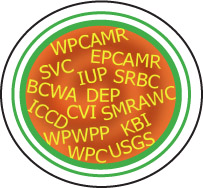|
|
6th Annual Pennsylvania Statewide
Conference on |
|
|
The Conference
Technical Session Registration NOW AVAILABLE!!
Return to
|
Abstract Limestone Upflow Pond with Siphon Discharge Design Considerations: A Simple Solution to High Volume, High Metals AMD Discharges Joseph Schueck, P.E., P.G., PADEP Bureau of Abandoned Mine Reclamation Daniel Helfrich, P.E., Design Engineer, Division of Acid Mine Drainage Abatement, PADEP Bureau of Abandoned Mine Reclamation David Fromell, P.E., Section Chief, Division of Acid Mine Drainage Abatement, PADEP Bureau of Abandoned Mine Reclamation
High volume, high metal AMD discharges challenge passive treatment systems. Despite the term “passive”, most of these systems require some level of operation and maintenance. Clogging by precipitates and short-circuiting are common modes of failure. By examining the successes and failures of systems already in place and taking advantage of research conducted by others, engineers within the PADEP’s Bureau of Abandoned Mine Reclamation (BAMR) developed a design for a limestone upflow pond with a siphon discharge to treat AMD. The upflow pond is designed to flush automatically on almost a daily basis. Additional components would typically include a basin for aluminum and iron precipitation and an aerobic wetland for final iron precipitation. If present, manganese is addressed at the tail end of the system. This paper discusses the components of the upflow pond and the rationale behind the design decision-making. Two of these systems are to be constructed in 2004 and will be closely monitored to determine their effectiveness. Construction costs for the upflow pond should be less that the costs of a vertical flow reactor (VFR). Perhaps the most significant benefit is that the operation and maintenance demands of an upflow pond with a siphon discharge are anticipated to be minimal.
|
|
